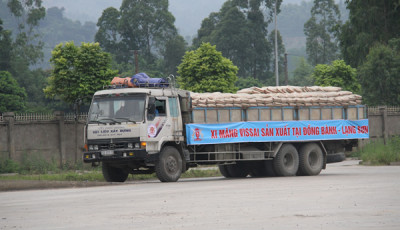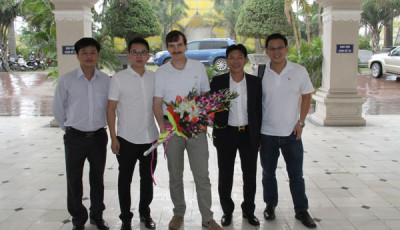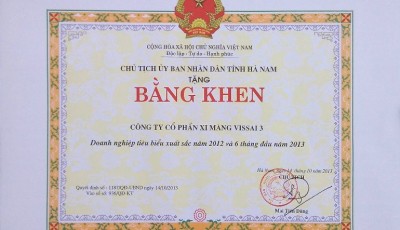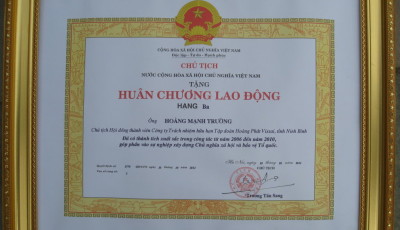The Vissai held position of the Chairman of the Vietnam – Bangladesh Business Council at Vietnam – Bangladesh Business Forum to push up economic – commercial cooperation
(VCP) – On the occasion of the Vietnam visit by the Prime Minister of the People’s Republic of Bangladesh, Vietnam Chamber of Commerce and Industry (VCCI) in collaboration with the Embassy of Bangladesh in Vietnam organized the Vietnam – Bangladesh Business Forum on November 3 in Hanoi.

Vietnam – Bangladesh Business Forum (Photo: Quang Nghia)
In the witness of the Government’s representatives and business community of two countries, Mrs. Sheikh Hasina gave a speech to highlight socio-economic achievements obtained by a country of Asian South region.
Bangladesh’s GDP growth rate was 5.4% in 2009 but increased up to 6% in 2010 and attained 6.7% in 2011. In its economic structure, agricultural production accounted for 20.6% GDP and attracted 63% of labor force. Main agricultural products are rice, jute, tea, sugar-cane, potatoes, tobacco and oily grains … Bangladesh’s industry made up 20.7% GDP and attracted about 12% of labor force. Now Bangladesh has about 2 million laborers working abroad who annually remit billions of US dollars (more than USD 10 billion in 2010 and USD 14 billion in 2011).
Prime Minister Sheikh Hasina welcomed Vietnamese investors who intend to do business and invest in Bangladesh and told that the State of Bangladesh would create the best convenient conditions for Vietnamese enterprises to invest and do business safely in Bangladesh.

Vietnam – Bangladesh Business Forum (Photo: Quang Nghia)
Addressing at the Forum, Mr. Vu Tien Loc, Chairman of VCCI, appreciated good relationship between Vietnam and Bangladesh in many fields in recent years. Two-way trade turnover between two countries increased up to 100%/year, achieving USD 500 million and making effort to obtain USD 1 billion for 2-3 next years.
According to Mr. Vu Tien Loc, with its population of over 160 million people, Bangladesh is a greatly potential market for Vietnam in Asia South Region. With similarities in goods structure, cooperative potentiality between two countries is great, especially goods sectors such as consumption production, agricultural product processing, shipbuilding, information technology and tourism …

Vietnam – Bangladesh Business Forum (Photo: Quang Nghia)
In 2012, Vietnam’s main exports to this market are cement, fiber goods, textile fibers, iron and steel, cloths and rice … while, Vietnam’s main imports from this market are pharmaceutical products, textile and garment materials, leathers and shoes …
According to Mr. A.K.Azad, Chairman of the Federation of Bangladesh Chambers of Commerce and Industry, in many past years, Bangladesh had carried out reforms to attract foreign investors and speeded up economic relation with many countries in the world, including Vietnam. However, economic cooperation between two countries has still yet corresponded with their potentialities. With cheap labor force and low premises lease, Mr. A.K.Azad said that it was a convenient condition for Vietnamese enterprises to invest and do business in Bangladesh, particularly textile and garment field.
Sharing business experiences in Bangladesh market, Mr. Nguyen Tien Dat, Director of Vissai Export – Import Company Ltd, Hoang Phat Group addressed that it was necessary to learn about and diversify the fields between two countries. He believed that the Forum would be a successful key for Vietnamese enterprises and a bridge for enterprises of two countries to have opportunity of meeting and sharing experiences each other.
At the Forum, Mr. Vu Tien Loc – Chairman of VCCC made decision of establishing Vietnam – Bangladesh Business Council and appointed Mr. Nguyen Tien Dat, Director of Vissai Export – Import Company Ltd to hold a position of Chairman of Vietnam – Bangladesh Business Council.
Foundation of Vietnam – Bangladesh Business Council will contribute to forward two countries’ economic – commercial cooperation to a new height and create new mainsprings in relation between two business communities.





















